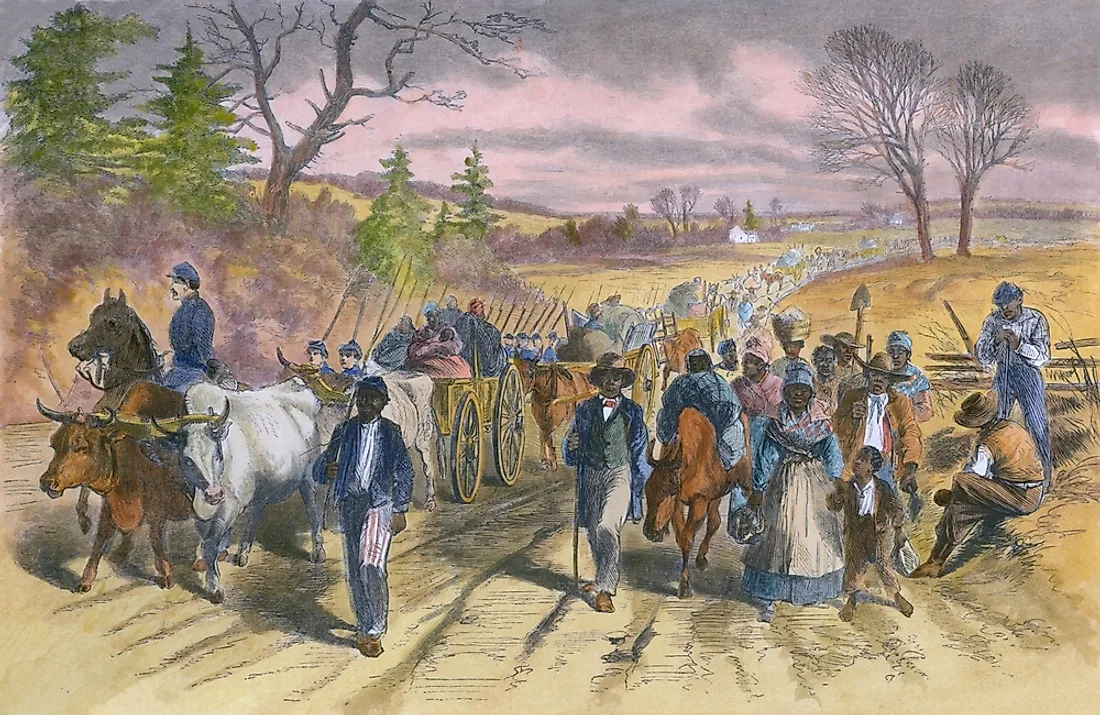When Was The Emancipation Proclamation and What Did It Do?

The Proclamation 95, popularly known as the Emancipation Proclamation, was an executive order and a presidential decree that was issued by Abraham Lincoln, the 16th president of the United States, on January 1, 1863. The proclamation ordered that all the African American slaves in the ten rebellious states be granted freedom as a means of suppressing rebellion and bringing an end to the American Civil War. The Emancipation Proclamation did not cover slaves in Union areas that were not in rebellion such as Maryland, Kentucky, Missouri, and Delaware.
Background
According to the Fugitive Act of 1850, all runaway slaves were required to return to their owners. However, during the American Civil War (1861-1865), some of the generals like Benjamin Butler were refused to return the slaves and declared them as contrabands of war. Many viewed this decision by the generals as a recognition of the Confederacy as a separate independent state. President Lincoln, on the other hand, considered the war as concerning the preservation of the Union rather than bringing slavery to an end. However, he distanced himself from the designation of slaves as contrabands.
By mid-1862, thousands of slaves had escaped and joined the invading Northern Armies. At this point, President Lincoln was convinced that it was time to abolish slavery. On September 22, 1862, soon after the victory of the Union at Antietam, the president issued a preliminary Emancipation Proclamation, ordering freeing of slaves in rebellious states by January 1, 1863. None of the Confederate states ended the rebellion against the Union and the order was signed and took effect on January 1, 1863.
Implementation
The Emancipation Proclamation came into effect in two stages. The first stage was the issuance of a preliminary Proclamation on September 22, 1862, outlining the intention to implement the second part, which came into effect on January 1, 1863. The Proclamation was to take effect in 10 areas of Confederacy which were all included in the second part. The four Union-occupied states alongside Tennessee were not included. The proclamation was immediately effected in Union-occupied areas of the Confederates such as Virginia, Mississippi, Winchester, and Corinth.
Impact Of The Proclamation
Although some sources have indicated that the Proclamation did not free any slave, on the contrary thousands of slaves were freed during the period of the war as a result of the proclamation. Some eyewitness accounts in areas such as Hilton Head and Port Royal record thousands of blacks celebrating on January 1 when they became aware of their legal status. Emancipation took place peacefully without any violence. The Proclamation also shifted the objective of the war from just uniting the country to the abolition of slavery in the US. The runaway slaves who had escaped to the Union and captured by the Union armies as “contrabands of war” were also freed when the Proclamation took effect. However, the proclamation was rejected by the Copperhead Democrats who wanted the Union restored without abolishing slavery. While some Confederates welcomed the Proclamation, the majority were enraged by it.











